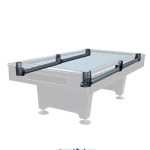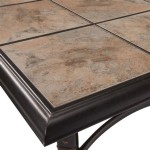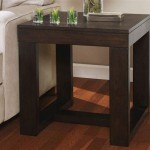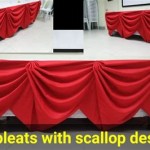Refinishing a Coffee Table With Paint: A Comprehensive Guide
Refinishing a coffee table using paint is a cost-effective and rewarding project that can breathe new life into a worn or outdated piece of furniture. It allows for customization to match existing décor or to create a completely new focal point for a living room. This process involves careful preparation, the selection of appropriate materials, and the application of paint in a precise manner to achieve a durable and aesthetically pleasing finish.
Before starting any refinishing project, it is crucial to assess the condition of the coffee table. This evaluation will determine the extent of preparation required and the specific products needed. Look for issues such as deep scratches, chipped veneer, water damage, or previous finishes that are peeling. Identifying these problems early will ensure the appropriate steps are taken to address them and prevent issues from resurfacing after the refinishing process.
The first step in refinishing is always thorough cleaning. Use a mild soap and water solution to remove dirt, grime, and any loose debris from the surface. After cleaning, allow the table to dry completely. This ensures that any subsequent sanding and priming steps are performed on a clean, stable surface, promoting better adhesion of the new paint.
Removing the Existing Finish
Removing the existing finish is a critical stage, especially if it is damaged or incompatible with the intended paint. There are several methods to achieve this, each with its own advantages and disadvantages. The most common methods are sanding, using a chemical stripper, or a combination of both.
Sanding is a mechanical process that involves using abrasive materials to gradually remove the old finish. It is effective for removing light scratches and leveling minor imperfections. It requires a progression of sandpaper grits, starting with a coarser grit (such as 80 or 100 grit) to remove the bulk of the finish, followed by finer grits (such as 150 or 220 grit) to smooth the surface for painting. A sanding block or an orbital sander can be used, depending on the size and complexity of the coffee table. Always sand in the direction of the wood grain to avoid creating unsightly scratches.
Chemical strippers are designed to dissolve the existing finish, making it easier to remove. These products are available in various formulations, including paste and liquid forms. When working with chemical strippers, it is essential to follow the manufacturer's instructions carefully. Always wear appropriate personal protective equipment (PPE), such as gloves, eye protection, and a respirator, as these products can be corrosive and release harmful fumes. Apply the stripper evenly to the surface and allow it to dwell for the recommended time. Scrape off the dissolved finish with a plastic scraper, taking care not to gouge the wood. After stripping, neutralize the surface with a recommended solvent to ensure optimal paint adhesion.
The choice between sanding and using a chemical stripper depends on the type and condition of the existing finish. If the finish is thin and relatively intact, sanding may be sufficient. However, if the finish is thick, heavily damaged, or contains multiple layers, a chemical stripper may be more efficient. For complex surfaces with intricate details, a combination of both methods may be necessary. Sanding after stripping can help to remove any remaining residue and further smooth the surface.
After removing the old finish, inspect the coffee table for any imperfections, such as dents, scratches, or cracks. Fill these imperfections with wood filler, following the manufacturer's instructions. Allow the filler to dry completely and then sand it smooth to blend seamlessly with the surrounding surface. This ensures a smooth and uniform surface for painting and prevents imperfections from being visible through the new finish.
Priming for Optimal Adhesion
Priming is a crucial step in the refinishing process that is often overlooked, but it significantly impacts the final result. Primer serves several important functions: it seals the surface, provides a uniform base for the paint, improves paint adhesion, and helps to block stains and tannins from bleeding through the topcoat. Choosing the right primer is essential for achieving a durable and long-lasting finish.
There are various types of primers available, each with its own specific properties. Oil-based primers are known for their excellent adhesion and stain-blocking capabilities, making them suitable for surfaces prone to staining or that have been previously painted with oil-based paints. However, oil-based primers can be more difficult to clean up and require longer drying times. Latex primers are water-based and offer easier cleanup and faster drying times. They are a good choice for general-purpose priming and are compatible with both latex and acrylic paints. Shellac-based primers are known for their exceptional stain-blocking and sealing properties. They are particularly effective for blocking knots in wood and preventing bleed-through. However, shellac-based primers can be brittle and are not recommended for surfaces subject to heavy wear and tear.
When applying primer, use a high-quality brush, roller, or spray gun, depending on the type of primer and the size of the coffee table. Apply the primer in thin, even coats, following the manufacturer's instructions. Allow each coat to dry completely before applying the next. Sand lightly between coats with fine-grit sandpaper (such as 220 grit) to remove any imperfections and create a smooth surface for the paint. This ensures optimal adhesion and a professional-looking finish.
Tinting the primer to a similar color as the topcoat can also improve the coverage and color saturation of the paint. This is particularly helpful when using light-colored paints over dark surfaces. Ask the paint store to tint the primer to a shade slightly lighter than the chosen paint color. This technique can minimize the number of coats of paint required and result in a more even and vibrant finish.
Applying the Paint and Protective Finish
The final step in refinishing a coffee table is applying the paint. Selecting the right type of paint is vital for achieving the desired look and durability. Acrylic latex paints are a popular choice for furniture refinishing due to their durability, ease of application, and wide range of colors. They are also water-based, making them easy to clean up. Oil-based paints offer excellent durability and a smooth, glossy finish, but they require longer drying times and more involved cleanup. Chalk paints are known for their matte finish and ability to be easily distressed. They adhere well to most surfaces with minimal preparation, making them a convenient option for achieving a vintage or rustic look.
Apply the paint in thin, even coats using a high-quality brush, roller, or spray gun. For a brush, choose one with synthetic bristles for latex paints and natural bristles for oil-based paints. A foam roller can provide a smooth, even finish, especially on flat surfaces. A spray gun can achieve a professional-looking finish with minimal brushstrokes or roller marks, but it requires practice and proper ventilation. Apply multiple thin coats of paint rather than one thick coat to prevent drips, runs, and uneven coverage. Allow each coat to dry completely before applying the next, following the manufacturer's instructions.
After the paint has dried completely, consider applying a protective topcoat to enhance durability and protect the finish from scratches, stains, and moisture. Polyurethane is a durable and water-resistant topcoat that is available in various sheens, from matte to glossy. It is a suitable choice for coffee tables that will be subjected to heavy use. Wax is a natural topcoat that provides a soft, matte finish and enhances the depth of the paint color. It is easy to apply and maintain, but it offers less protection than polyurethane. Varnish is another durable topcoat that provides a clear, hard finish. It is available in both oil-based and water-based formulations. Choose a topcoat that is compatible with the type of paint used and that provides the desired level of protection and sheen.
Apply the topcoat in thin, even coats, following the manufacturer's instructions. Allow each coat to dry completely before applying the next. Sand lightly between coats with fine-grit sandpaper (such as 320 or 400 grit) to remove any imperfections and create a smooth, flawless finish. Use a tack cloth to remove any sanding dust before applying the final coat. Allow the topcoat to cure completely before using the coffee table to ensure maximum durability and protection.
Once the final coat is fully cured, the coffee table is ready for use. Handle it with care during the initial weeks to allow the finish to fully harden. Regular cleaning with a soft, damp cloth will help maintain the finish and prevent buildup of dirt and grime. Avoid using harsh chemicals or abrasive cleaners, as these can damage the paint and topcoat. With proper care, a refinished coffee table can provide years of enjoyment and add a touch of personalized style to any living space.

How To Refinish A Table Farmhouse Style My 100 Year Old Home

Refinished Coffee Table

Dear Lillie Coffee Table Step By

Refinished Coffee Table

How To Refinish And Stain Wood Roots Wings Furniture Llc

Easy Chalk Paint Coffee Table Makeover You Need To See

Old Thrift Coffee Table Transformed With Chalk Paint Polyshades Artsy Rule

How To Refinish A Coffee Table With Milk And Chalk Paint 1905 Farmhouse

Coastal Style Coffee Table Makeover With Stain And Paint Artsy Rule

Elegant Coffee Table Makeover Diy With Chalk Paint








